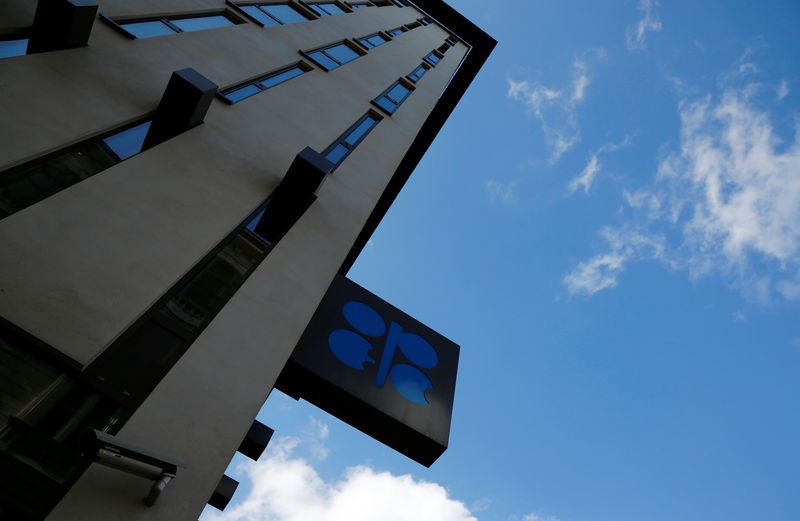By Alex Lawler
LONDON (Reuters) - OPEC on Wednesday cut its forecast for growth in world oil demand in 2020 due to an economic slowdown, an outlook the producer group said highlighted the need for ongoing efforts to prevent a new glut of crude.
In a monthly report, the Organization of the Petroleum Exporting Countries said oil demand worldwide would expand by 1.08 million barrels per day, 60,000 bpd less than previously estimated, and indicated the market would be in surplus.
The weaker outlook amid a U.S.-China trade war and Brexit could press the case for OPEC and its allies to maintain or adjust their policy of cutting output. Iraq said ministers would on Thursday discuss whether deeper cuts were needed.
OPEC, in the report, lowered its forecast for world economic growth in 2020 to 3.1% from 3.2% and said next year's increase in oil demand would be outpaced by "strong growth" in supply from rival producers such as the United States.
"This highlights the shared responsibility of all producing countries to support oil market stability to avoid unwanted volatility and a potential relapse into market imbalance," the report said.
OPEC, Russia and other producers have since Jan. 1 implemented a deal to cut output by 1.2 million bpd. The alliance, known as OPEC+, in July renewed the pact until March 2020 and a committee reviewing the pact meets on Thursday.
Oil prices (LCOc1) pared an earlier gain after the report was released to sit just below $63 a barrel. Despite the OPEC-led cut, oil has tumbled from April's 2019 peak above $75, pressured by trade concerns and an economic slowdown.
The report said oil inventories in industrialized economies fell in July, a development that could ease OPEC concern over a possible glut.
Even so, stocks in July exceeded the five-year average - a yardstick OPEC watches closely - by 36 million barrels.
SUPPLY RISING
OPEC and its partners have been limiting supply since 2017, helping to clear a glut that built up in 2014-2016 when producers pumped at will, and revive prices.
The policy has given a sustained boost to U.S. shale and other rival supply, and the report suggests the world will need less OPEC crude next year.
Demand for OPEC crude will average 29.40 million bpd in 2020, OPEC said, down 1.2 million bpd from this year.
OPEC said its oil output in August rose, however, by 136,000 bpd to 29.74 million bpd according to figures the group collects from secondary sources. It was the first increase this year. Saudi Arabia, Iraq and Nigeria boosted supply.
Top exporter Saudi Arabia told OPEC that the kingdom raised August output by just over 200,000 bpd to 9.789 million bpd. Saudi Arabia continues to pump far less than its quota of 10.311 bpd.
Thanks in part to Saudi restraint, producers are still over-complying with the supply-cutting deal. Losses in Iran and Venezuela, two OPEC members facing U.S. sanctions, have widened the supply reduction. August's increase, however, puts OPEC output further above the 2020 demand forecast.

The report suggests there will be a 2020 supply surplus of 340,000 bpd if OPEC keeps pumping at August's rate and other things remain equal, more than the surplus forecast in last month's report.
